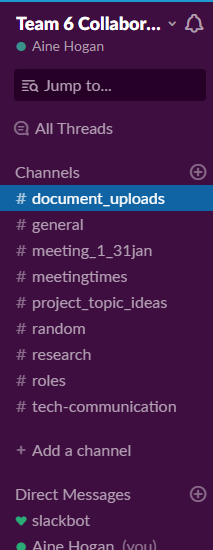When I started my Masters in Technical Communication and E-Learning, I expected to learn a lot about various software and digital tools, and I anticipated that my basic skills in Microsoft Office would be irrelevant. I was right about the first but, fortunately, wrong about the second.
This blog post will explore Microsoft PowerPoint, its features, my personal experience with the software and its potential benefits and challenges.
PowerPoint is a presentation software programme that can be used in business or education. It can present information through text, graphics, images, videos, and animations.
PowerPoint enables the user to create slideshows of information. It has many of the same features as Microsoft word. However, PowerPoint sets up your presentation in slides instead of pages.
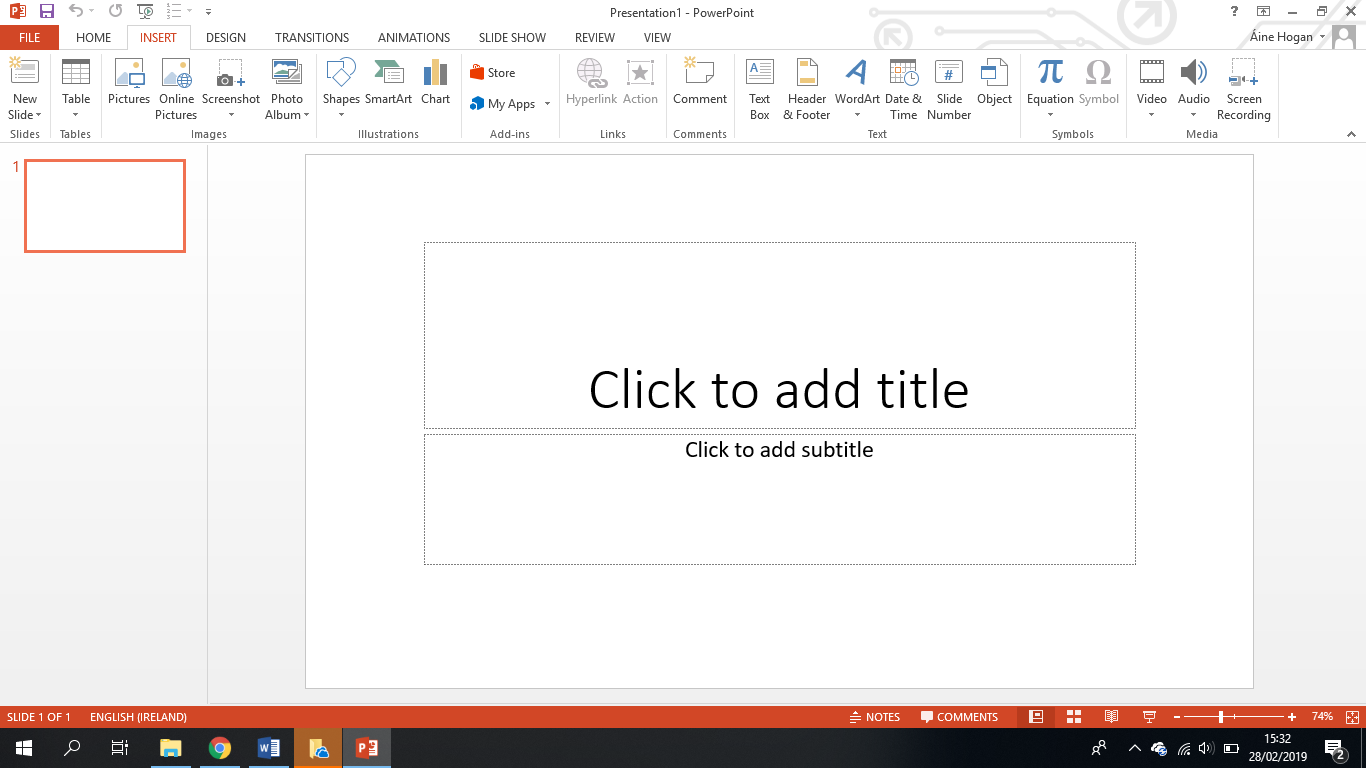
The user can select a blank slide or use one of PowerPoint’s designs or templates.
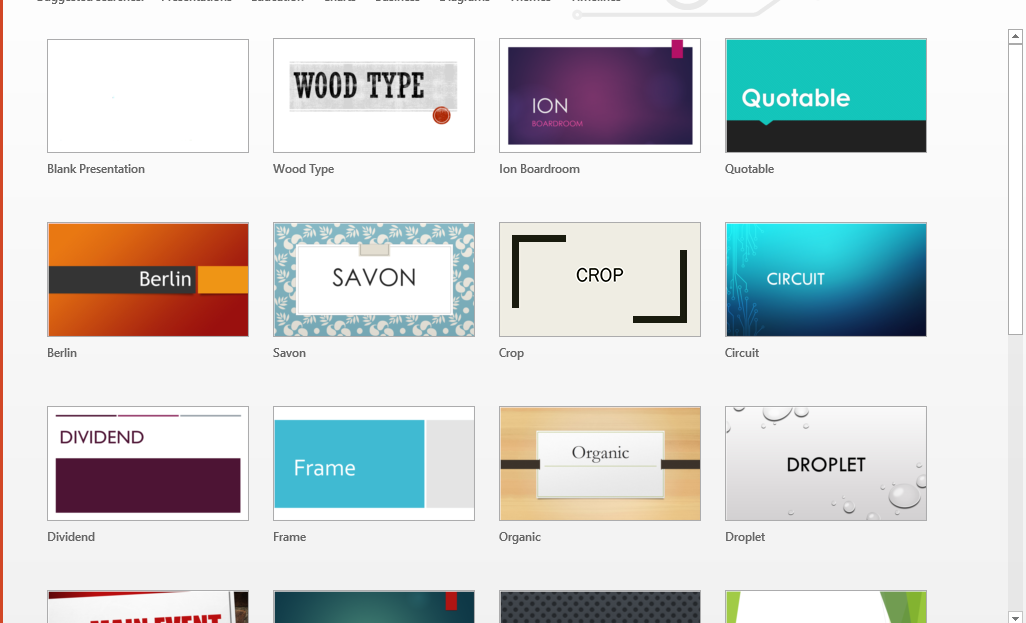
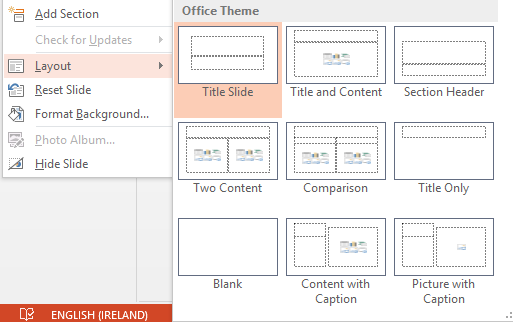
It is easy to add, delete, copy, or move slides. Just like in Word, the user can add text, upload images, create graphics using the shapes tool, and present data in the form of flow charts or graphs. It is also possible to add videos from your own files or from the internet.
Animations and transitions are features that Word does not have and, if used properly, can add greatly to a presentation.
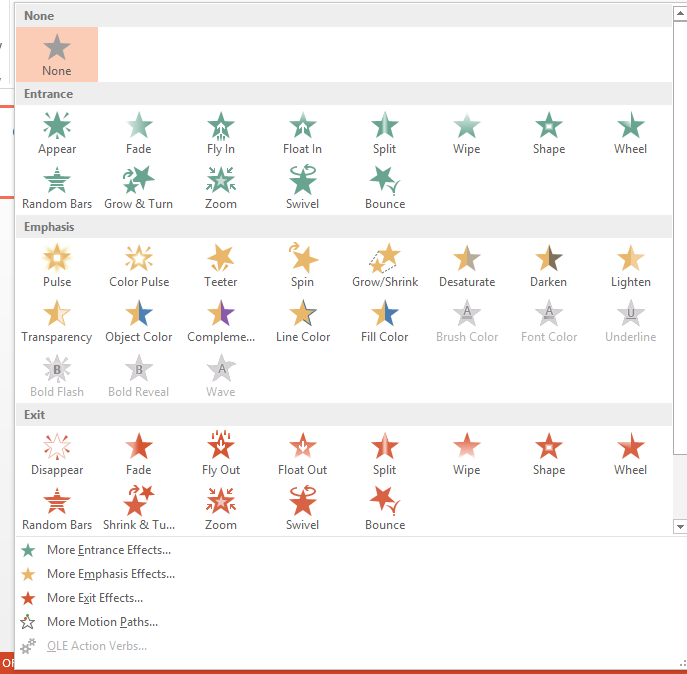
I used PowerPoint a lot in my teaching. It is an invaluable resource for teaching vocabulary or new poems in Irish. Teachers are expected to teach Irish without using any English. I endeavoured to abide by this rule as I could see the value in immersing the children in the language. In order to minimise my use of English, I would make the lesson as visual as possible using PowerPoint. I would have images representing the new vocabulary on a number of slides and I would create games in the presentation to help the children to remember the new words.
PowerPoint enhanced the way I taught songs and poetry. I would find images to represent each line in a poem, and present them in the correct order on a PowerPoint presentation with the text underneath the image. I would read the poem to the children and for the most part the visuals would help them to understand the meaning. As the presentation progressed the children would be reading the poem. Further along in the presentation, I would delete words here and there and the children would be able to fill in the blanks as they read the poem. Eventually the text would no longer appear and the children would be able to recite a full poem just by looking at the pictures. PowerPoint would make this achievable in one lesson. See the example below.



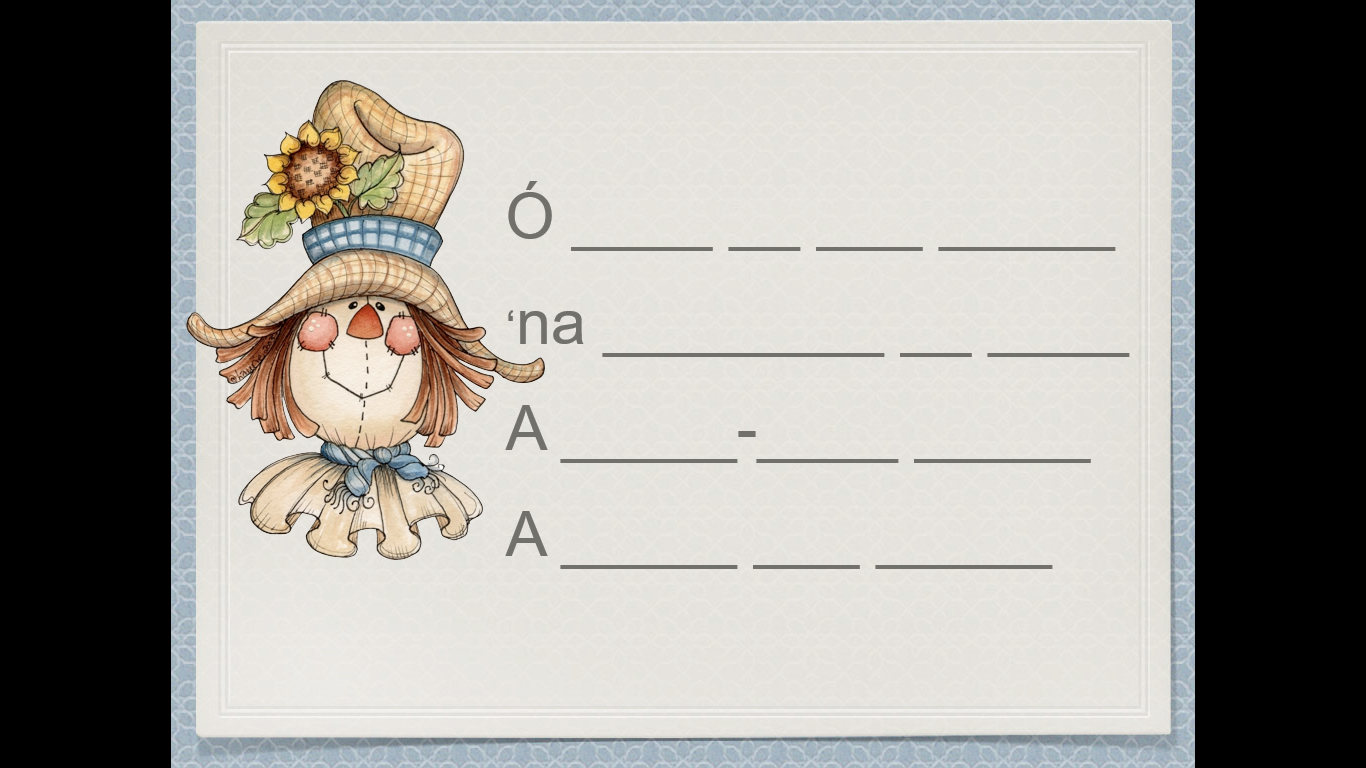
I am still using PowerPoint in my MA for storyboarding. As part of a module, we must design a digital resource. I am in the planning phase of this assignment and PowerPoint is allowing me to create a clear overview of my digital resource. I find that I can easily create the same look and feel in all my slides.
In my opinion, the benefits of PowerPoint are the ability to move around slides and to copy and reuse slides. In addition, if the user does not want to move through their presentation in a linear way, they can create hyperlinks from one slide to another one. For example, if there is something mentioned on slide 2 that is further explained on slide 6, a hyperlink can be set up on slide 2 that will send the user to slide 6. Another hyperlink can be added to slide 6 that brings the user back to slide 2. This allows for the design of a more complex presentation.
People often misuse PowerPoint. Instead of using it to present visuals and sum up the main points to support their narrative, users often overload slides with all of the information they are presenting.
I think PowerPoint is an underrated resource and that its full potential is not exploited enough by users.

